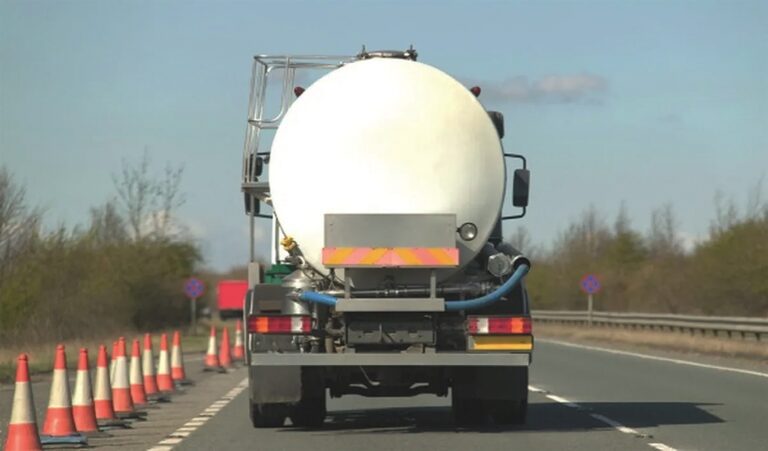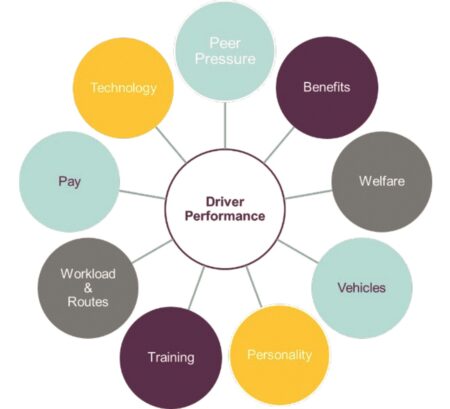
This series, looking at premium structure, effective fleet risk management, and optimising claims handling processes, will give greater insight into ways to take greater control of fleet insurance costs. In this, the second of three articles, Karl Jones of industry insurance specialist OAMPS, will explore some effective strategies for reducing claims frequency.
With the average motor insurance premium at its highest since the Association of British Insurers (ABI) started collecting data over a decade ago1, fleet owners are understandably keen to explore ways to reduce theirs. Limiting the number of incidents involving their vehicles is the first, and most important, step to minimising fleet insurance costs.
The Driving for Better Business organisation found that when its business champions implemented a road risk programme, their fleet insurance fell by an average of 26%, while damage costs dropped by 78%.2
The success of a fleet risk management strategy is heavily reliant on drivers doing what they can to help achieve the goal. There are two strands to optimising driver performance – managing existing drivers and having a robust driver recruitment and selection process.
Driver performance factors

Driver management
• Telematics
• Cameras
• Training (beyond CPC/ADR compliance)
• Licence checks
• Toolbox talks
• Claims performance incentives/penalties
• Fitness to drive (D&A testing, mental health, fatigue
• Familiarity with vehicle type, routes and locations
• Annual health checks
• Periodic eyesight checks
• General performance incentives/penalties
• Working conditions (pay, benefits, vehicles
• Vehicle checks (including spot checks)
• Driver handbook
Driver recruitment and selection
Establish a formal recruitment policy setting standards for acceptance and recruitment procedures, including the company’s policy for health screening, for those who drive for the company, identifying variations applicable to different groupings, for example:
• Professional or full-time drivers
• “Essential use” drivers
• Drivers supplied with a vehicle as a personal benefit
• Other employees who may, on occasion, drive
• Casual, temporary, and agency drivers
In addition to the terms of employment, which should also refer to other relevant company policies, such as those for disciplinary matters, the recruitment policy should identify benchmark criteria as part of the recruitment procedure for each group.
New driver selection factors
• Age
• Health screening
• Experience
• Ability
• Personality/behavioural responses
• Licence check
• Eyesight test
• Personality
References (including claims record) should always be taken – taking on a driver with a poor disciplinary, performance, or claims record is unlikely to improve your overall fleet risk profile, and claims history (even when driving vehicles away from work) is an important factor that underwriters will use in assessing risk and calculating premiums.
New driver management
New drivers should always undergo an induction period, including a structured and systematic training and assessment programme.
The training should be based on the completion of a needs analysis. It is likely that a range of different sorts of training will be appropriate and falls under three main headings:
• On-road coaching
• Workshop/classroom training
• E-learning
The most successful training programmes use a blended approach (mixing the above methods) thus ensuring that drivers remain focused and engaged.
Successful completion of the induction period should include the following:
• Buddying (with feedback from established and suitably trained driver)
• Telematics data used to inform any training requirements
Driver turnover
Many motor fleet underwriters do consider driver turnover rates when calculating terms.
Finding ways to make working for you enjoyable and keeping employees positively engaged are great goals or any business, and the shortage of drivers makes this difficult, especially with the current economic situation.
Simply paying more is not always the solution – additional benefits such as healthcare plans, private medical insurance, and employee benefit schemes are alternatives that can add considerable value to some employees.
Rewarding the best performers and highlighting good behaviours also helps, along with a strong, positive relationship between the drivers and their managers.
Having clear career paths, access to additional training and support with studying for additional qualifications are also useful in helping ambitious employees with their personal development.
Hiring the right driver in the first place makes keeping them a lot easier!
Agency drivers
Although the number of incidents and collisions caused by, or involving, agency (or temporary) drivers is disproportionately high.3 For some businesses, agency drivers are an essential part of a flexible workforce and, like any collective, some are great, others are not so good.
Given that potential variability, what can you do to minimise the risks to your business if using agency drivers?
Organisations such as Logistics UK (formerly The Freight Transport Association), Driver Agency Excellence scheme, and Recruitment and Employment Confederation (REC) members both recognise, encourage, and promote good practice within the sector.
You should expect agencies that are part of these schemes to:
• Take relevant references covering the previous 24 months of employment, including checking any periods of unemployment.
• Check drivers’ licences, regularly re-check them and, if a driver doesn’t work for the agency for more than three months, carry out additional licence checks.
• Keep relevant records of potential drivers, including past experience, qualifications, and references.
• Offer driver negligence cover.
Claims analysis
Identifying any trends that emerge from your claims experience is a useful way to know where to focus a strategy to reduce claims frequency – whether it’s a location with difficult access, a particular type of vehicle, driver’s age/experience, or unfamiliarity with a particular vehicle, location or route or, even, a particular driver.
Causation analysis can also help shape your strategy. If your HGV drivers have a significant proportion of lane-changing collisions or collisions on roundabouts, then positioning training or awareness of other road users might be useful.
Time of year and even time of day can also illuminate where changes can be made to deliver the most significant improvement in your claims experience.
Improvement strategy
This will always depend on the discoveries made during the risk management and claims performance audit.
Successful strategy implementation will need commitment, support, and buy-in from the CEO to the employees at the wheel, to embed any changes.
Technology
Telematics and cameras are proving invaluable in aiding both the identification of performance issues (harsh braking/acceleration, overspeeding etc.) and in–cab cameras can help persuade drivers to comply with company policy on the use of mobile devices whilst driving.
Organisations’ desire to invest in technology will likely be impacted by the current economic climate. It’s possible that some will not prioritise investment, but if you imagine the impact of just one fault accident could be as much as £15,000 in additional premiums and other related costs, how much additional revenue do you need to generate to make enough net profit to cover that?
When you start doing the sums, the case for technology might be stronger than you previously thought – motor claims inflation is showing no signs of abating any time soon. OAMPS has extensive experience and understanding of the motor fleet industry and can support clients with risk management advice as well as long-term pricing stability and speed of service. For more information get in touch with the motor fleet team.
The sole purpose of this article is to provide guidance on the issues covered. This article is not intended to give legal advice, and, accordingly, it should not be relied upon. It should not be regarded as a comprehensive statement of the law and/or market practice in this area. We make no claims as to the completeness or accuracy of the information contained herein or in the links which were live at the date of publication. You should not act upon (or should refrain from acting upon) information in this publication without first seeking specific legal and/or specialist advice. Pen Underwriting Limited trading as OAMPS Hazardous Industries accepts no liability for any inaccuracy, omission or mistake in this publication, nor will we be responsible for any loss which may be suffered as a result of any person relying on the information contained herein.
OAMPS is part of Pen Underwriting Limited which is authorised and regulated by the Financial Conduct Authority (FCA number 314493). Registered Office: The Walbrook Building, 25 Walbrook, London EC4N SAW. Registered in England and Wales. Company Number: 5172311

